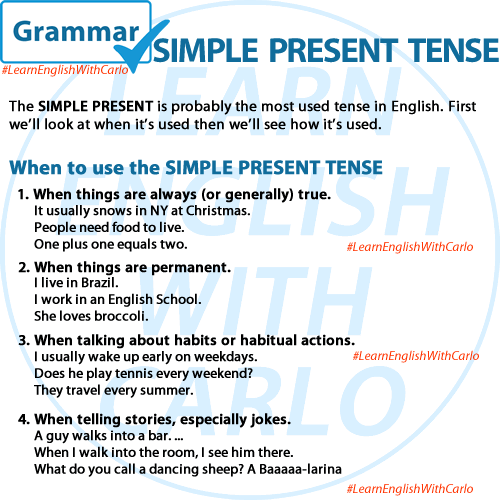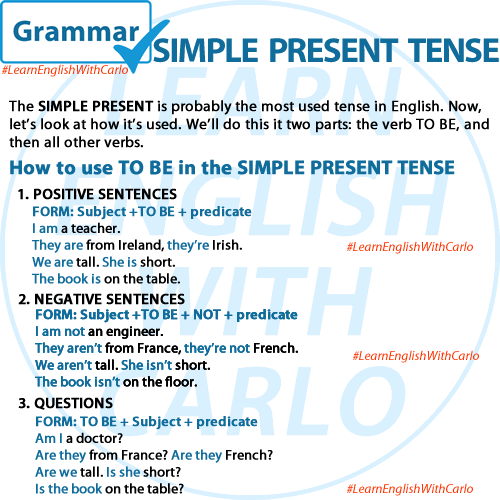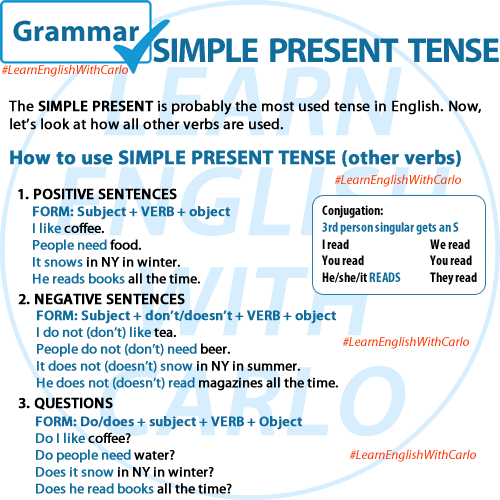The SIMPLE PRESENT is probably the most used tense in English. First, we’ll look at when it’s used then we’ll see how it’s used.

When to use the SIMPLE PRESENT TENSE
1. When things are always (or generally) true.
It usually snows in NY at Christmas.
People need food to live.
One plus one equals two.
2. When things are permanent.
I live in Brazil.
I work in an English School.
She loves broccoli.
3. When talking about habits or habitual actions.
I usually wake up early on weekdays.
Does he play tennis every weekend?
They travel every summer.
4. When telling stories, especially jokes.
A guy walks into a bar. …
When I walk into the room, I see him there.
What do you call a dancing sheep? A Baaaaa-larina


How to use SIMPLE PRESENT TENSE (other verbs)
1. POSITIVE SENTENCES
FORM: Subject + VERB + object
I like coffee.
People need food.
It snows in NY in winter.
He reads books all the time.
Conjugation:
3rd person singular gets an S
I read
You read
He/she/it READS
We read
You read
They read
2. NEGATIVE SENTENCES
FORM: Subject + don’t/doesn’t + VERB + object
I do not (don’t) like tea.
People do not (don’t) need beer.
It does not (doesn’t) snow in NY in summer.
He does not (doesn’t) read magazines all the time.
3. QUESTIONS
FORM: Do/does + subject + VERB + Object
Do I like coffee?
Do people need water?
Does it snow in NY in winter?
Does he read books all the time?
